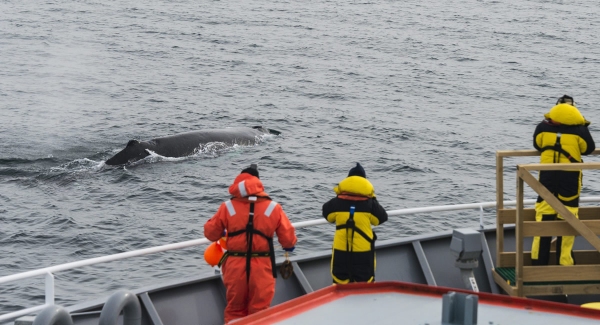RV Tangaroa is undertaking a six-week voyage to Antarctica and the Southern Ocean between 8 February and 21 March 2018 with scientists from NIWA and the University of Auckland.
Scientists will undertake a range of surveys to better understand the processes governing this environment and its relevance to New Zealand. These include oceanographic observations, atmospheric observations, whale and benthic habitat studies. The whale studies are being undertaken by the University of Auckland.
Science objectives:
There are seven key science objectives for the Tangaroa Marine Environment and Ecosystem Voyage 2018:
- Physical oceanography - Make oceanographic observations and deploy fixed moorings to investigate the export of Antarctic Bottom Water from the Ross Sea and water mass variations across the study region.
- Aerosol-cloud interactions - Take atmospheric observations and samples to investigate interactions between marine aerosols and cloud formation over the Southern Ocean.
- Microbial planktonic communities - Study the structure and function of marine microbial planktonic communities in the Southern Ocean.
- Seabed habitats and fauna - Survey benthic and demersal habitats and fauna at sites in the northern Ross Sea and on the Pacific-Antarctic Ridge.
- Cetacean studies - Study the distributions of whales in the Ross Sea region and their role in the Ross Sea region ecosystem.
- Zooplankton – Study the abundance and distribution of zooplankton in the Ross Sea and Antarctic waters
- Mesopelagic fauna - Study the distribution and abundance of mesopelagic fishes and krill in the Ross Sea region of the Southern Ocean.
New Zealand Antarctic and Southern Ocean science directions and priorities
The proposed research aligns with:
- New Zealand’s international obligations under CCAMLR (Commission for the Conservation of Antarctic Marine Living Resources).
- New Zealand’s objective to establish a network of marine protected areas in the Ross Sea region.
- Creating larger collaborative programmes of research.
- Improving understanding of Antarctic and Southern Ocean responses and impact on climate change.
One of the key outcomes of the research will be to generate baseline data required to determine whether the objectives of the Ross Sea MPA are being achieved. The MPA covers more than 1.55 million square kilometres and came into existence in December.

